External Hard Drive Not Working
Featured Articles
- 01 HDD Not Initialized I/O Device Error
- 02 The Parameter Is Incorrect
- 03 External Hard Drive Freezes Computer
- 04 External Hard Drive Taking Long Time to Open
- 05 External Hard Drive Loading Forever
- 06 How to Fix a Corrupted External Hard Drive
- 07 Toshiba External Hard Drive Not Working
- 08 WD External Hard Drive Slow to Response
- 09 Seagate External Hard Drive Blinking
How to fix the external hard drive not responding:
Simply reinsert the USB connector firmly into the port to see if it resolves the issue if it has come loose.
Try again with a fresh cable if the old one is damaged or broken. It's worthwhile to replace the cable in case there's an issue within, even if there's no visible damage.
External hard drives are often used to back up essential data from our Windows PCs. If the hard drive is not responding, it could prove disastrous. But don't worry, we'll explain how to get it working again and save those precious files.
The following solutions for fixing problems with external hard drives will work with any brand, including WD Elements, Seagate, SanDisk, Toshiba and others.
Causes of External Hard Drive Not Responding
If your external hard drive suddenly stops working or cannot be recognized by your PC, don't panic. There are many reasons why the drive has become problematic, such as these:
You don't have to buy a new external hard drive and lose all your precious data. First, check the causes that make your external hard drive not work:
- Problematic connection
- RAW, invalid or unsupported file system
- Drive letter conflict or no drive letter
- No partition
- Not initialized
- Outdated disk driver
- USB Root Hub is outdated
- Disk is physically damaged
- ...
No matter the cause, if you follow the tips laid out below you should hopefully get the drive going once more or at least recover your data.
If you are having a similar issue with your PC's hard drive, you can try the fixes below.
Hard Drive Not Showing Up or Detected in Windows? Learn How to Fix
Are your hard drives, internal or external, not showing up in File Explorer or the Disk Management app on Windows? Follow these tips to make them recognizable to your system again.
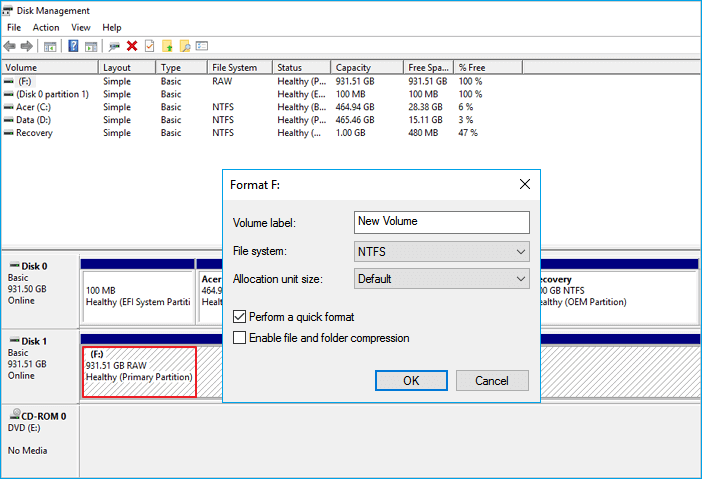
Make a Non-Working Portable Hard Drive Detectable
If you encounter problems with an external drive that suddenly stops showing or becomes undetectable to your PC, the first thing to check is the physical connection.
#1. Check and Change External Hard Drive Connection Cable
Start off by checking the connecting cable between your drive and PC:
- If the USB connector has become loose in the port, just push it firmly back into place and see if that corrects the problem.
- If the cable is broken or damaged, replace it with a new one and try again. In fact, even if you can't see any obvious damage, it's worth swapping the cable in case there is a problem inside.
#2. Change a USB Port or Connect to a New Computer
If the cable appears fine, then it could be the USB port on your PC that's faulty.
Try plugging the drive into another one to see if that helps. If possible, you can also try connecting the drive to a different computer to see whether the problem is with the drive or PC.
#3. Check Power Management for USB Hub
If none of the above methods get the drive working again, you should check to see if the power management settings in Windows could be causing the issue. Here's what to do:
Step 1. In Run (Windows + R), type devmgmt.msc and hit Enter.
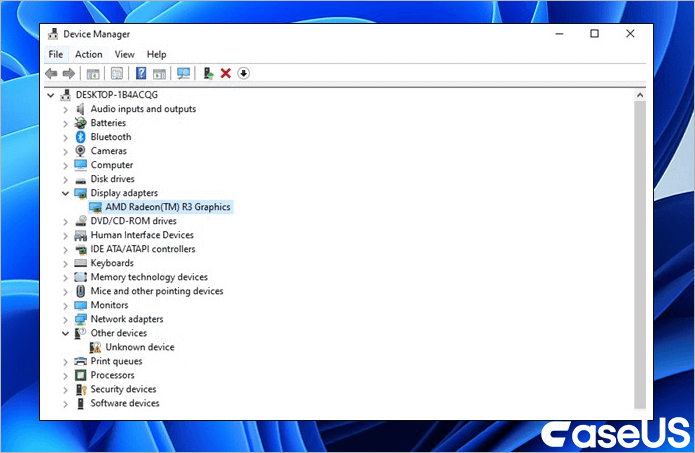
Step 2. Open Device Manager > expand "Universal Serial Bus controllers".
Step 3. Right-click USB Root Hub > Properties > Power Management > uncheck "Allow the computer to turn off this device to save power".
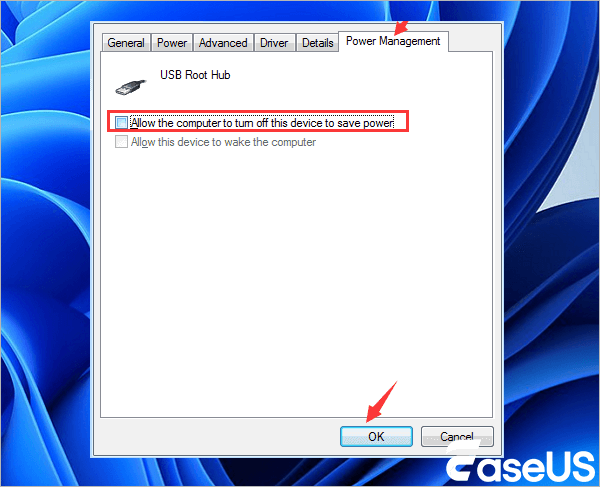
- Tip
- If your external hard drive is physically damaged, you'll need to take it to a maintenance center for repair.
After following the tips above, hopefully, your computer should be able to detect and recognize your external hard drive. If that's the case, you can try to open the drive and access the data.
If that's not possible, don't worry. We'll show you how to use the EaseUS data recovery software to restore all your precious data.
Recover Data Before Fixing a Non-Showing Hard Drive
⁉️I've had this external hard drive for about 5 months now, and it stopped working after I performed a clean installation of my PC. I've tried the following: unplugging and replugging it, checking disk management, and restarting my computer multiple times. I dont know what else i can do. The hard drive is on, indicated by the light, and is making noises, but no drive is showing up in File Explorer. from Reddit
After making the external hard drive detectable, we suggest that you recover any data stored on it immediately. This will not only ensure you have a copy of the files but also avoid the possibility of losing any data stored on the disk while trying to fix the problem. Here's how to salvage your files.
3 Steps to Recover Data from External Hard Drive
To recover data from a problematic drive you'll require dedicated software. EaseUS Data Recovery Wizard is the perfect tool for the job as it's fast, reliable, and easy to use.
See how to restore data from the external hard drive on your own:
Step 1. Use a correct USB cable to connect your external hard drive to your computer. Run EaseUS Data Recovery Wizard and you will see your external disk under External drives. This software supports all the popular external disk brands, including WD, Seagate, Toshiba, LaCie, SanDisk, Samsung, etc.
Select the external hard drive and then click the "Search for Lost Data" button.
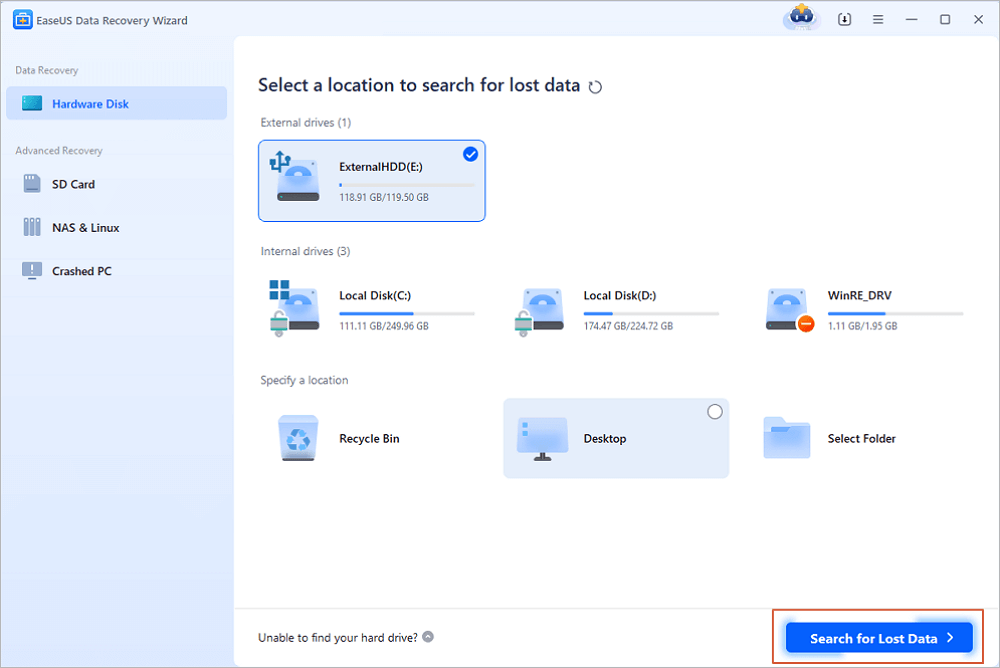
Step 2. As soon as the scan process starts, the software will find more and more lost and deleted data and display the data in the scan results. The recovered data will be nicely organized. You can quickly find the target files/folders by file type or search in the search box with exact file name.
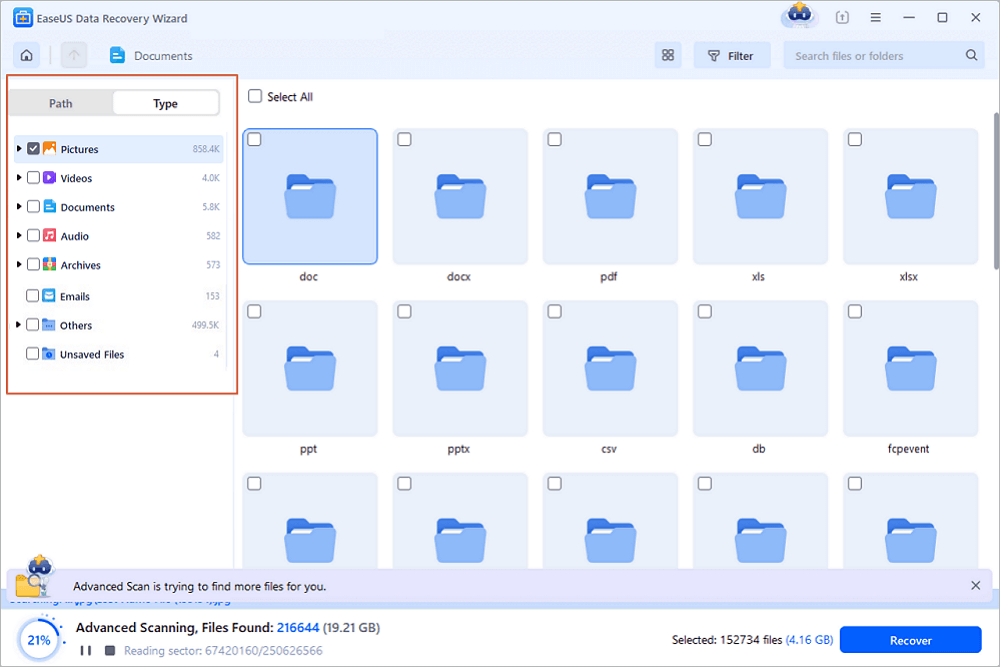
Step 3. You can preview the files found by EaseUS Data Recovery Wizard's scanning algorithms. Then, select files and click "Recover". To avoid data overwriting, we recommend that you save the recovered data to a different drive than the original Seagate drive.
💡Tip: You can restore data on the local disks, external hard drives, and also the cloud storage.
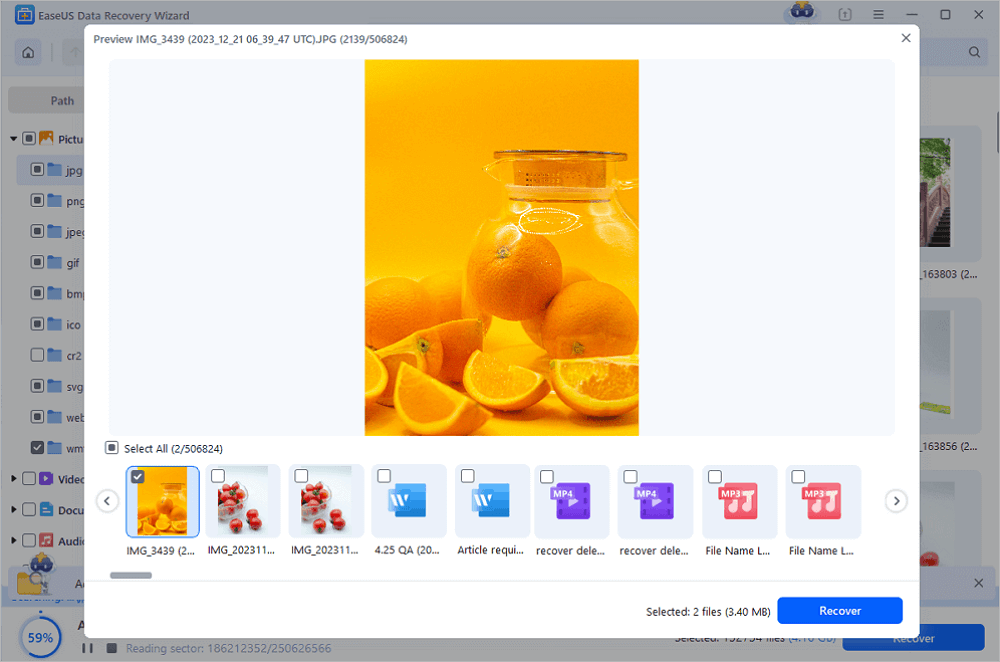
Do not save the recovered data on your external hard drive until it is fixed and working normally again.
Many Windows 10/11 users have proved the efficacy of the tool. If you are interested in resolving the file recovery, share it on Facebook, Twitter, Instagram, and other social media platforms!
How to Fix "External Hard Drive Not Responding" Error
Now we'll look at how to repair the non-responding or undetectable drive
To get a better idea of what needs fixing, open Disk Management in Windows and check the state of the drive.
- #1. Check and Fix Disk Errors on External Hard Drive - Disk Contains Corrupted File System Error
- #2. Format External Hard Drive to NTFS - Disk Shows RAW or Unsupported File System
- #3. Create A New Partition in External Hard Drive - Disk Displays as Unallocated
- #4. Assign a New Drive Letter to External Disk - Disk Shows as "New Volume" with No Drive Letter
- #5. Initialize External Disk and Create a New Volume - Disk Is Unknown, Not Initialized
- #6. Update Disk Driver
- #7. Update Universal Bus Controllers
- #8. Run Antivirus Software
- #9. Turn to External Hard Drive Manufacturer or Repair Center for Help
Methods 1-7 can fix most problems with non-working drives, but should that not be the case you can turn to methods 8 and 9 for help. Let's go through each method step by step.
Method 1. Check and Fix Disk Errors on External Hard Drive
Mostly, when an internal or external hard drive contains an unknown error or a corrupted file system, the Windows PC will be unable to detect or open the drive.
Here are two options you can try to fix these problems.
Option 1. Run Partition Manager Freeware to Fix External Hard Drive Not Responding Error
Download and install EaseUS Partition Master Free on your PC.
Step 1. Right-click the target partition that may have a problem.
Step 2. Choose "Check" > "Check File System".
Step 3. In the Check File System window, check the "Try to fix errors if found" option by clicking the "Start" button.
Step 4. Please wait patiently. After the process, you can click the "Finish" button to exit the window.
Option 2. Run CMD to Manually Fix External Hard Drive Errors
- Warning
- Running chkdsk can hopefully fix the external hard drive errors, however, it can also result in total data loss. So, perform data recovery in advance, and then continue with the CMD method.
Step 1. Type cmd in the Search box, right-click to open Command Prompt.
Step 2. Right-click "Command Prompt" and choose "Run as administrator".
Step 3. Type chkdsk /f /r /x g: and hit Enter to begin the checking process.
Note: Replace g with the drive letter of your external hard drive.
Step 4. When it's finished, type: exit and hit Enter to finish the process.
Your disk should now be detectable to Windows. If it still doesn't work, there's another option you can try.
Option 3. Run CMD Alternative to Fix External Disk File System Error
The Command line is a powerful way to fix problems on Windows, but it can also cause severe problems if you enter code incorrectly. Therefore, we strongly recommend you try EaseUS Clean Genius instead.
It's a practical and safe way to repair file system or disk error, as we'll demonstrate below:
Download EaseUS CleanGenius and install it on your computer. Let's start checking and refixing file system error on your device now.
Step 1. Click "File Showing" to enter the next step.
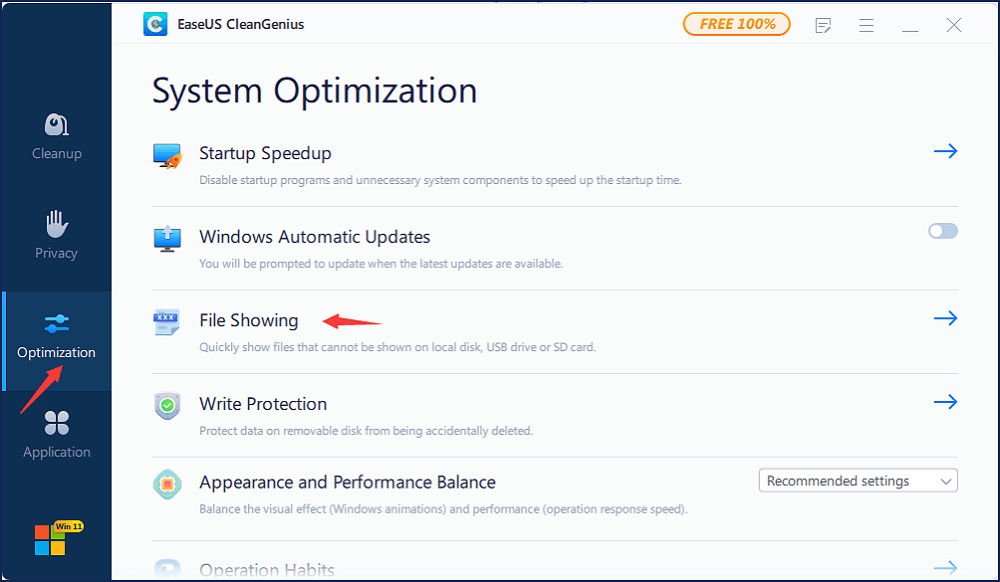
Step 2. Choose the target device and tick the box of "Check and fix file system error". Click "Execute" to start fixing the problematic device.
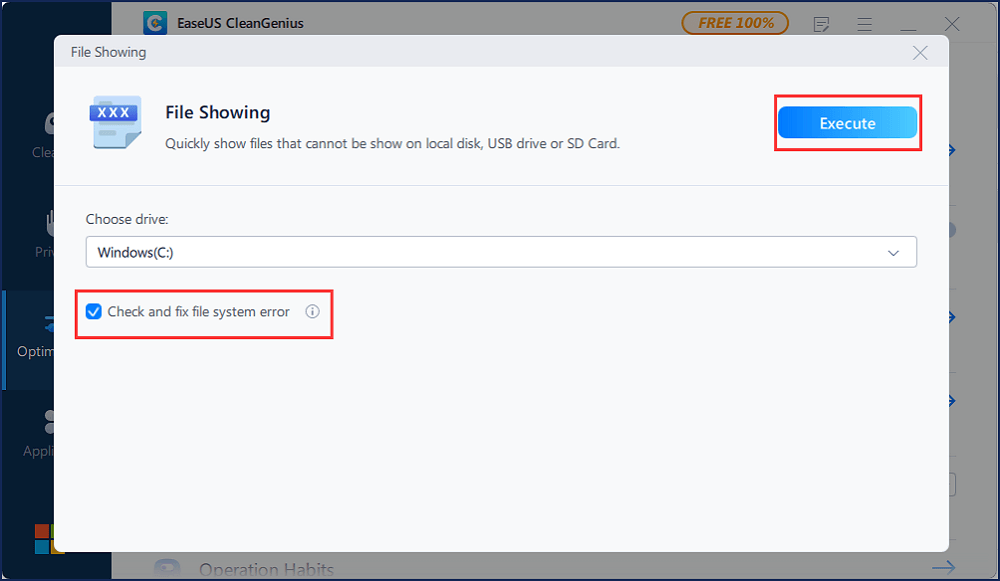
Step 3. When the fixing process completes, click "here" to open and use your device.
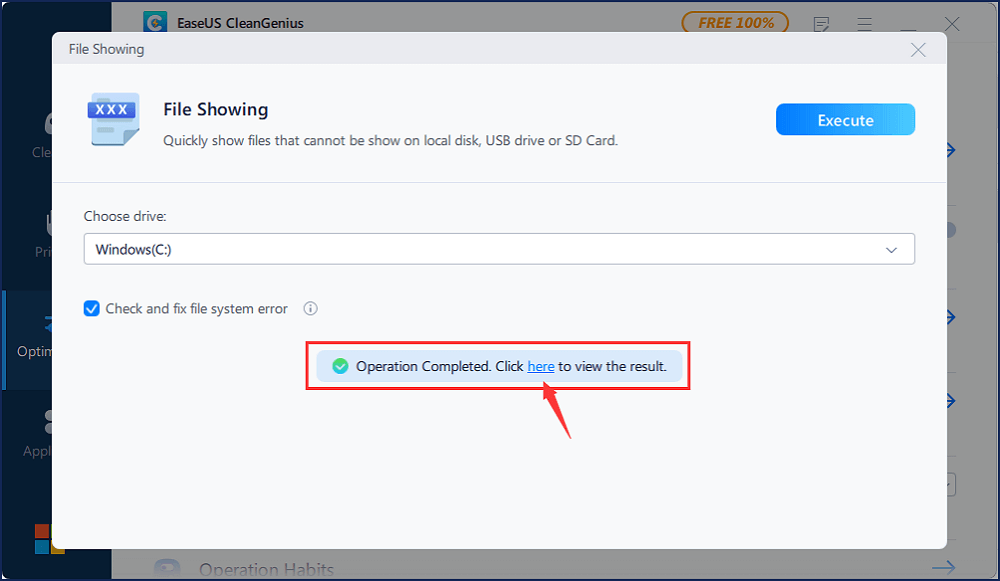
Method 2. Formatting an External Hard Drive to NTFS to Repair the Fault
If your external hard drive shows up as RAW or with an Unsupported File System in the Disk Management app in Windows, the best solution is to reformat the drive
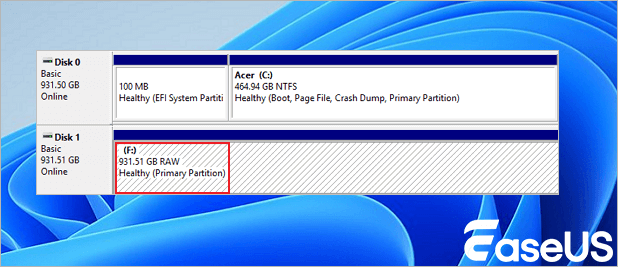
Here's how to reformat a drive that's showing as RAW or with an Unsupported File System:
Step 1. In Run (Windows + R), type diskmgmt.msc and hit Enter.
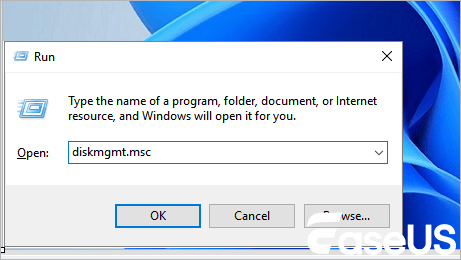
Step 2. Go to Disk Management, right-click the external hard drive, and select "Format".
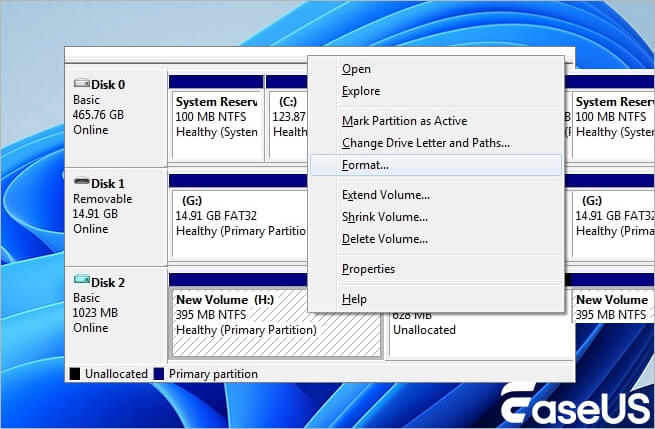
Step 3. Choose a file system like NTFS or exFAT and tick "Quick format". Click "OK" to start the formatting.
When this is done, your external drive should be safe to use once more
Method 3. Create A New Partition in External Hard Drive
Mostly, when your external hard disk shows as unallocated, it means that there is no partition in the disk. As a result, the computer cannot recognize it. To fix this issue, you need to first recover data from the disk first (as shown in Part 2).
Then, you can follow the steps below to create a new partition, making the external hard drive working again:
Step 1. Connect the unallocated external hard drive to your PC and open Disk Management.
Step 2. Right-click on the unallocated space of the external hard drive, select "New Simple Volume".
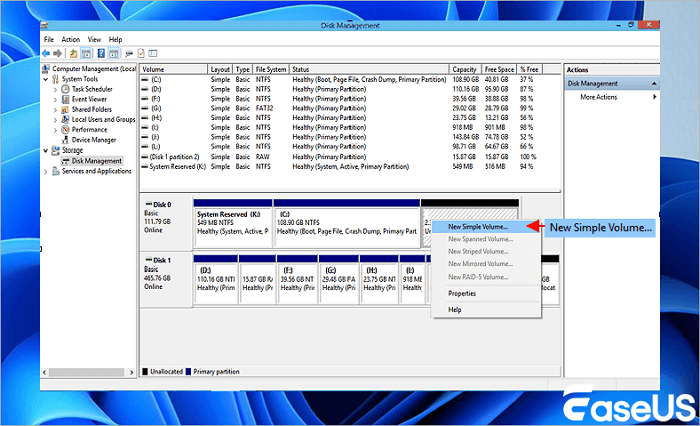
Step 3. Set partition size, drive letter and file system (NTFS), etc.
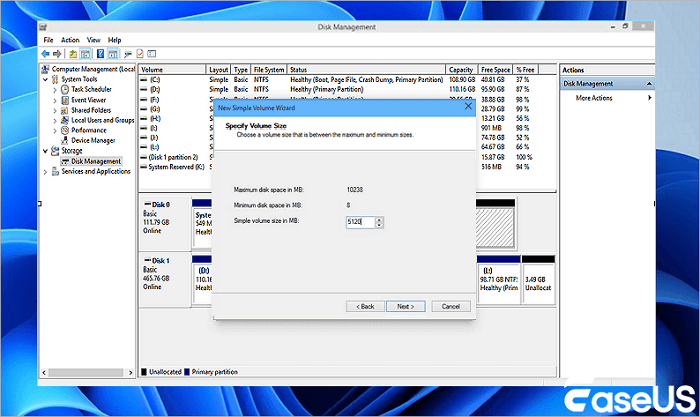
Step 4. Click "Finish" to complete the process.
Method 4. Assign a New Drive Letter to External Disk
Step 1. Go to Disk Management and right-click on your external hard drive.
Step 2. Go and select a new drive letter by clicking "Change", and click "OK" to confirm.
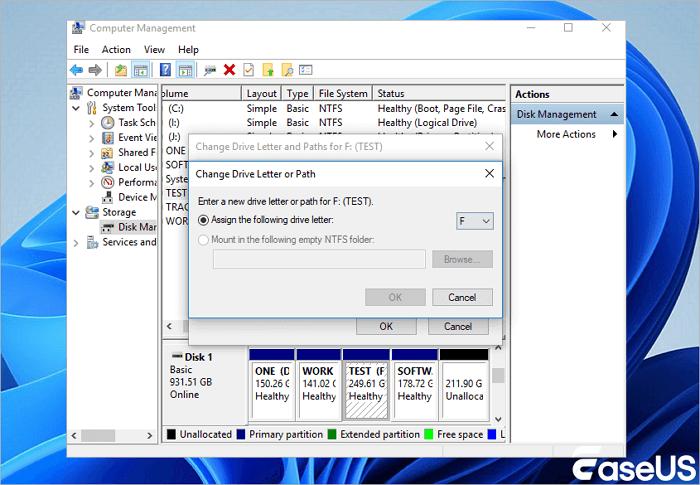
The non-responding drive should now be readable by Windows.
Method 5. Initialize External Disk and Create a New Volume
Step 1. Right-click "My Computer" > "Manage" to run Disk Management.
Step 2. Here, right-click the Unknow external hard drive and click "Initialize Disk".
Step 3. Select the disk(s) to initialize and choose MBR or GPT partition style, then, click "OK" to confirm.
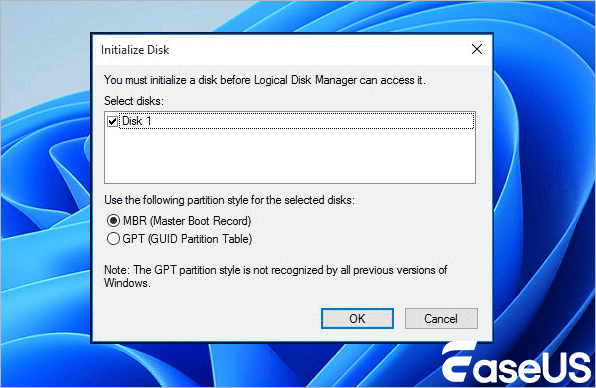
Now the drive should be recognized as ‘unallocated', so if you have data you need to recover, go back to Part 1 and use the EaseUS data recovery software to retrieve your files.
Step 4. Finally, right-click on the unallocated space on your external hard drive and create a new volume on it.
Method 6. Update Disk Driver
Step 1. Right-click "This PC" and choose "Manage".
Step 2. Click "Device Manager" then expand "Disk drives".
Step 3. Find and right-click the problematic external drive and select "Update driver".
Step 4. Click "automatically search for driver software online".
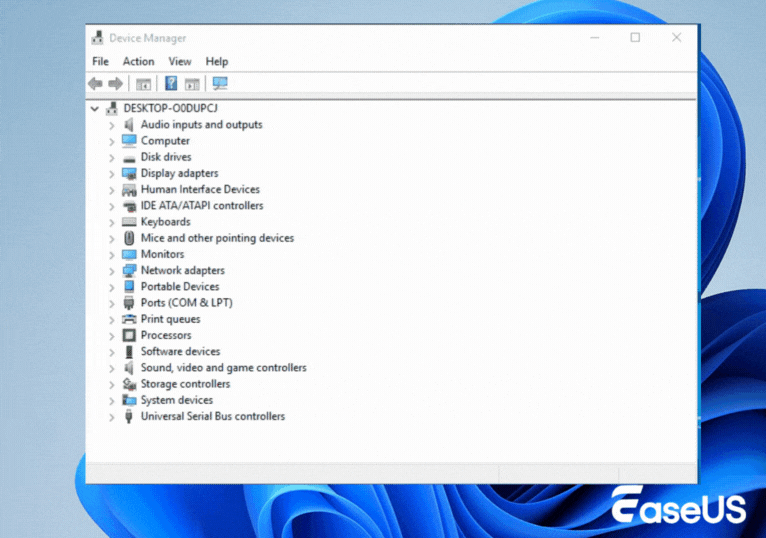
Method 7. Uninstall Universal Bus Controllers
Step 1. Open "Device Manager", find and expand Universal Serial Bus controllers
Step 2. Right-click on the USB controllers of your external drive and select "Uninstall device".
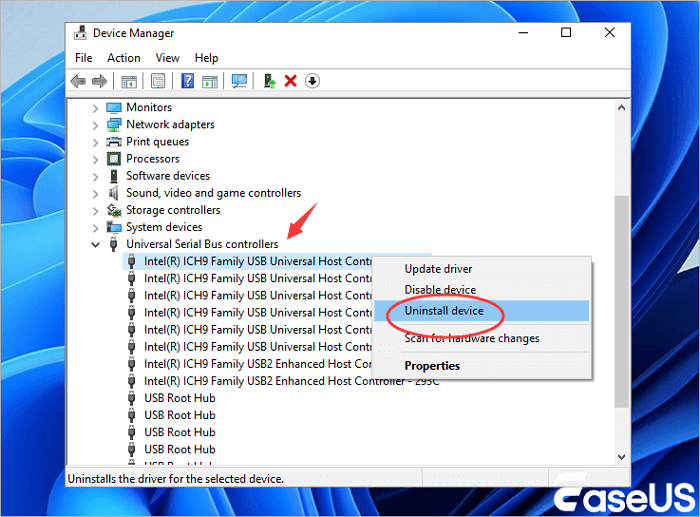
Step 3. Repeat to uninstall each USB controller one by one. Then restart the computer.
While rebooting the PC, Microsoft will automatically reinstall the USB controllers software for your not working external hard drive.
Method 8. Run Antivirus Software
Sometimes, the problem causing your drive to malfunction can be a virus or malware on your system. If you've tried the methods outlined above without success, another option is antivirus software. Here's how to use it:
Step 1. Install and run antivirus software on your computer.
Step 2. Scan and unlock the external hard drive.
Step 3. Wait for the cleaning process to complete, then, restart the PC.
After this, reconnect your external hard drive to the computer and check if you can use it again.
Method 9. Turn to External Hard Drive Manufacturer or Repair Center for Help
If all else fails, the last option is to contact either the manufacturer of the hard drive or a local disk repair center for help. If the physical disk is damaged in some way or the firmware is outdated, then they may be able to help.
If you're only interested in saving the data on the drive, then either may be able to assist you, plus you can contact EaseUS Data Recovery service to talk to one of our technicians.
Consult with EaseUS Data Recovery Experts for one-on-one manual recovery service. We could offer the following services after FREE diagnosis:
- Repair corrupted RAID structure, unbootable Windows OS and corrupted virtual disk file (.vmdk, .vhd, .vhdx, etc.)
- Recover/repair lost partition and re-partitioned drive
- Unformat hard drive and repair raw drive (BitLocker encrypted drive)
- Fix disks that become GPT-protected partitions
To Sum Up
On this page, we explained the causes of external hard drives not working, not responding, and not detecting errors. To make things easy for you, we divided the whole process into 3 parts:
Part 1. Make external hard drive detectable; Part 2. Recover data from the external hard drive; Part 3. Fix not working external hard drive with respective solutions.
The methods offered in this article can also be applied to repair and fix SD cards, memory cards, USB drives, flash drives, or hard drive partitions displaying similar issues.
It's recommended that you regularly create extra backups of your files to another secure location, with cloud storage services being an excellent and affordable option. But, if disaster should befall your drive, always remember that EaseUS Data Recovery Wizard is on hand to help.
External Hard Drive Not Working/Responding FAQs
After learning how to repair the not responding external hard drive, you may have more questions about it. See if you can find your answers here:
1. Why did my external hard drive stop working?
External hard drives are particularly prone to failure due to frequent improper use, outdated drivers, bundling with incompatible software on different operating systems, frequent connection and disconnection to different devices, and, in the case of portable or USB hard drives, unsafe ejection.
2. How can I recover data from a corrupted external hard drive?
To restore files from a corrupted external hard disk, follow these steps:
- Connect your hard drive to your computer.
- Start the EaseUS Data Recovery Wizard.
- Scan the external hard disk after selecting it.
- Select the files you want to recover and click Recover.
3. How do I fix a corrupted external hard drive?
You can use Windows repair tools if your external hard drive becomes corrupted.
- Open This PC, right-click the bad-sector drive, and select Properties.
- Navigate to the Tools menu.
- Click Check to examine and repair the faulty sectors on your external hard disk.
4. How much does it cost to fix a corrupted hard drive?
Based on these criteria, basic hard disk data recovery fees range between $100 and $700. This cost is normally determined by the severity of the damage and the time required to reach the data extraction point. If the hard drive fails mechanically, data recovery costs may escalate.
Was This Page Helpful?
Jaden is one of the editors of EaseUS, who focuses on topics concerning PCs and Mac data recovery. Jaden is committed to enhancing professional IT knowledge and writing abilities. She is always keen on new and intelligent products.
Approved by Martyn Casserly
Martyn Casserly has been involved with tech ever since the arrival of his ZX Spectrum back in the early 80s. He covers iOS, Android, Windows and macOS, writing tutorials, buying guides and reviews. He is a professional content contributor for many known ITwebsites like Macworld.co.uk and techadvisor.com.
Related Articles
-
How to Fix Lacie Hard Drive Not Turning on [2025 New]
![author icon]() Daisy/Dec 12, 2025
Daisy/Dec 12, 2025 -
SD Card Suddenly Stopped Working? 6 Ways to Fix
![author icon]() Jaden/Dec 12, 2025
Jaden/Dec 12, 2025 -
How to Unlock SD Card Without Switch [6 Methods]
![author icon]() Jaden/Dec 12, 2025
Jaden/Dec 12, 2025 -
Complete CFexpress Card Recovery Guide in 2025
![author icon]() Brithny/Dec 15, 2025
Brithny/Dec 15, 2025
